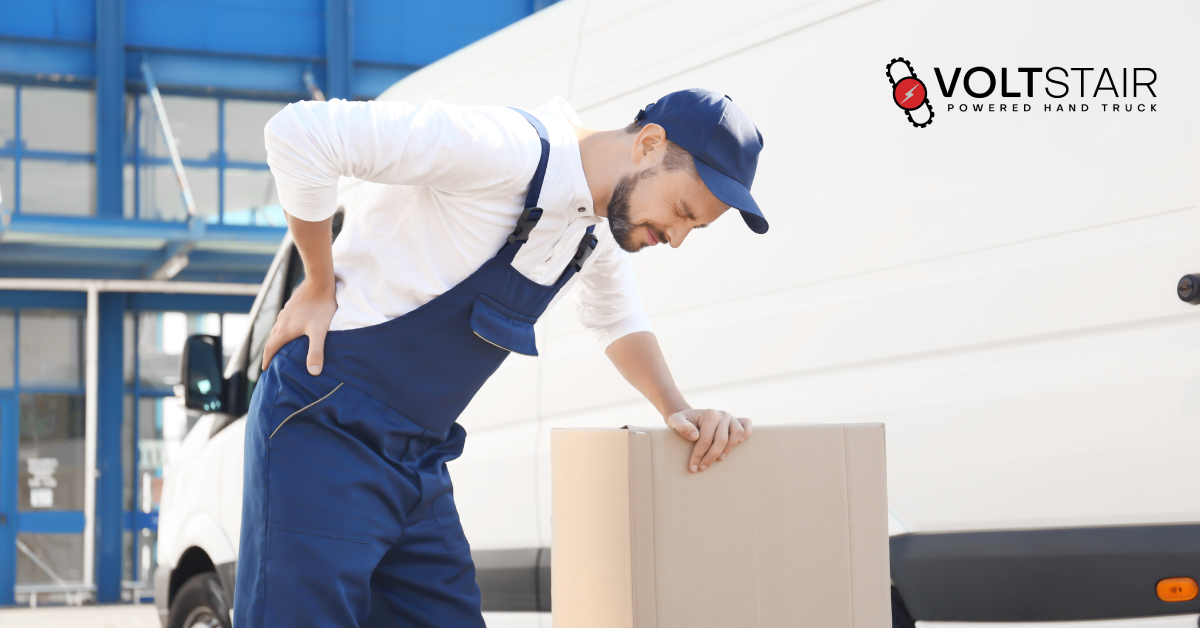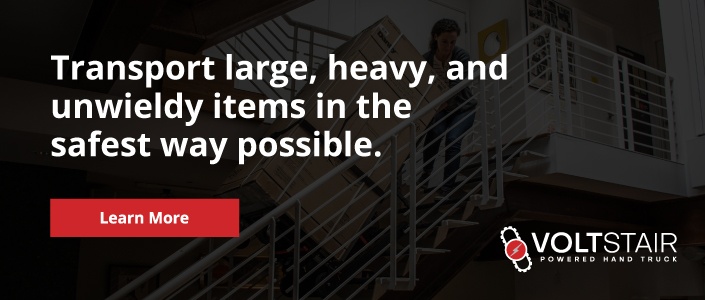We all know the age-old adage for moving heavy items: Lift with your legs, not your back. However, when you are cramped in a stairwell, you don’t always get to lift with proper form. Sometimes you have to risk injury to make a tight turn, or to get that heavy item up and over the last step.
So how do we avoid back injuries, if we’re doing this once, or even on a regular basis?
Wearing a back brace and closed-toed, non-slips shoes will certainly help any mover or hauler working with heavy items on a regular basis, but they don’t fully eliminate the possibility of an injury. When moving from the bottom of a flight of steps to the top, or vice versa, our backs, knees, wrists—all of the muscles and joints we rely on for heavy lifting—are at their most vulnerable and prone to injury. It’s during these hazardous moments that we must be our most aware to avoid a job-ending injury.
1. First, come up with a plan. Handling logistics before the moving day allows you to minimize stress; the more stressed out you are, the more cortisol your body releases, which increases the likelihood of a back injury. Manage the most important details beforehand, such as the equipment that will be used, as well as the persons helping out. Will any equipment be on hand to assist you, such as furniture pads or a dolly? Have you enlisted your strongest helpers to move the biggest items?
2. Next, you need to make sure you have figured out the most safe and efficient route to your moving vehicle. While moving heavy items, use a predetermined, clear pathway that is free from obstructions. When possible, a safe route over even flooring will decrease the chance of stumbling or tripping.
3. On the day of the move, be sure to stretch beforehand. To some, bending down to touch their toes before carrying some boxes to a truck might seem overly cautious for such a simple task, but take it from the professionals: you want to stretch your muscles before lifting hefty objects for several hours. This way, your body prepares for the work it’s about to do by loosening up, which reduces the risk of injury. Focus on stretching your arms, back, and legs to prevent pulling a muscle and hurting yourself.
4. Lastly, be sure to pace yourself, and schedule enough time to complete the move. When finding a mover, one of the mistakes clients most often make is to underestimate the total amount of time that a big move should take to complete. If a mover feels the pressure of losing a potential client, they may feel forced to agree to an unrealistic timetable. Suddenly, the mover’s more concerned about going over the agreed-upon time estimate, rather than moving every item as safely and efficiently as possible. A sense of anxious urgency may push them to rush the moving of heavier items—perhaps by cutting corners—which can result in a preventable injury or damaged property. Because there are always unforeseen obstacles that arise on the day (often referred to as lags or slacks), it shows professional expertise to include buffer time in your estimate for how long a job will take. This has the added benefit of making it possible to come in under the allotted time, which always leads to happy clients, referrals, and repeat customers.
A good final tip to help avoid injuries is that you consider using a Voltstair for your next move. Not only does the unit help prevent injuries (both long-term and short term), but it also moves the heaviest items in less time with less crew members. The motorized, battery-powered tracks do the heavy lifting, and greatly reduce risk of employee injury and property damage. Time is money, after all. The Voltstair is the ultimate tool for movers and haulers needing to accomplish jobs safely and efficiently while minimizing their potential risk for injuries. To learn more about the Voltstair, please visit our product page. If you’d like to chat with a consultant, you can get in touch here.






Leave Comment